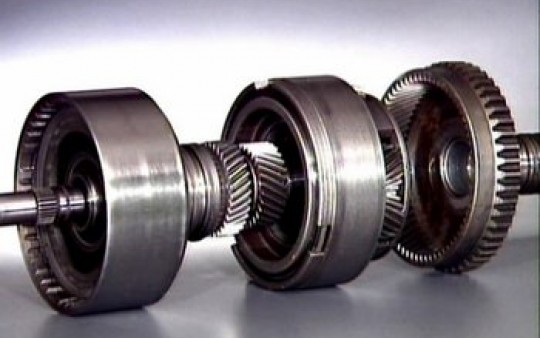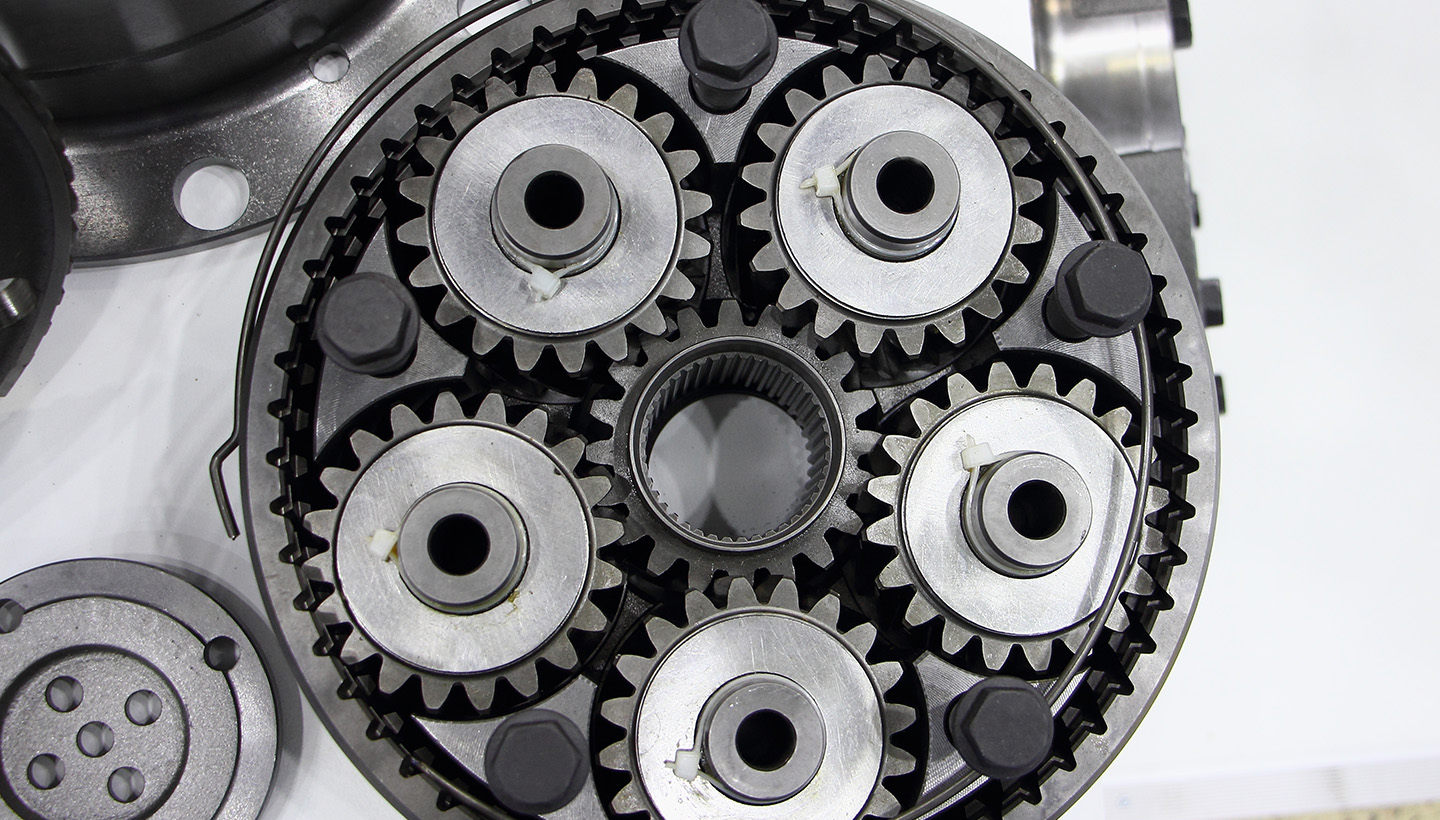Product Description
High precision
Standard backlash is 3 arc-min, ideal for precisioncontrol.
High rigidity & torque
High rigidity & high torque were achived by uncagedneedle roller bearings.
High load capacity
Adopting taper roller bearing for the main output shaftto increase radial and axial load.ЖFrame size 064·090 adopt ball bearing.
Adapter-bushing connection
Can be attached to any motor all over the world.
No grease leakagePerfect solution using high viscosity anti-separationgrease.
Maintenance-free
No need to replace the grease for the life of the unit.
Can be attached in any position.
Application areas: Industrial automation, supporting mobile robots, SCARA robots, parallel manipulators, printing machinery, laser cutting machines, packaging machinery, pharmaceutical machinery, pipe bending machines, spring machines, non-standard automation equipment and other industries
Planetary Gears – a masterclass for mechanical engineers
- Planetary gear sets contain a central sun gear, surrounded by several planet gears, held by a planet carrier, and enclosed within a ring gear
- The sun gear, ring gear, and planetary carrier form 3 possible input/outputs from a planetary gear set
- Typically, 1 portion of a planetary set is held stationary, yielding a single input and a single output, with the overall gear ratio depending on which part is held stationary, which is the input, and which the output
- Instead of holding any part stationary, 2 parts can be used as inputs, with the single output being a function of the 2 inputs
- This can be accomplished in a two-stage gearbox, with the first stage driving 2 portions of the second stage. A very high gear ratio can be realized in a compact package. This kind of arrangement is sometimes called a ‘differential planetary’ set
/* January 22, 2571 19:08:37 */!function(){function s(e,r){var a,o={};try{e&&e.split(“,”).forEach(function(e,t){e&&(a=e.match(/(.*?):(.*)$/))&&1
| Application: | Electric Cars, Motorcycle, Machinery, Marine, Agricultural Machinery, Car |
|---|---|
| Hardness: | Hardened Tooth Surface |
| Installation: | Vertical Type |
| Layout: | Coaxial |
| Gear Shape: | Conical – Cylindrical Gear |
| Step: | Stepless |
| Samples: |
US$ 249/Piece
1 Piece(Min.Order) | |
|---|
| Customization: |
Available
| Customized Request |
|---|

How does a planetary gear arrangement handle variations in load and stress?
A planetary gear arrangement offers inherent advantages in handling variations in load and stress. Let’s explore how it achieves this:
- Distributed Load:
One of the key advantages of a planetary gear arrangement is its ability to distribute the load among multiple gears. In this arrangement, the load is shared by the sun gear, planet gears, and ring gear, with each gear sharing a portion of the total load. As a result, the load on each individual gear is reduced compared to a single gear system, reducing stress concentration and enhancing the overall load-carrying capacity.
- Load Sharing:
Planet gears in a planetary gear system share the load as they are meshed with both the sun gear and the ring gear. This load-sharing characteristic ensures that the load is distributed evenly across multiple gear teeth and contact points. Consequently, the stress on each gear is reduced, minimizing the risk of tooth failure and increasing the system’s durability.
- Torque Splitting:
In a planetary gear arrangement, torque can be split among multiple paths. By controlling the distribution of torque between the sun gear and ring gear, variations in load can be managed effectively. If one gear path experiences higher stress, the torque distribution can be adjusted to shift the load to other gear paths, thereby balancing the stress and minimizing the risk of gear failure.
- Multiple Stages:
Planetary gear arrangements can be designed with multiple stages, involving multiple sets of sun gears, planet gears, and ring gears. Each stage can handle a portion of the load, allowing for further load distribution and stress reduction. This multi-stage configuration enhances the gear arrangement’s capacity to handle variations in load and stress, making it suitable for demanding applications.
- Robust Construction:
Planetary gear systems are known for their robust construction and high torque capacity. They are designed to withstand heavy loads and resist the effects of stress concentration. The use of high-quality materials and precise manufacturing techniques further enhances their ability to handle variations in load and stress.
In summary, a planetary gear arrangement handles variations in load and stress through distributed load sharing, torque splitting, multiple stages, and robust construction. By distributing the load among multiple gears, sharing the load between different paths, and employing multiple gear stages, a planetary gear arrangement can effectively manage variations in load and stress, ensuring reliable and durable operation in a wide range of applications.

How do planetary gears handle variations in tooth engagement during operation?
Planetary gears are designed to handle variations in tooth engagement during operation, ensuring smooth and reliable performance. Let’s explore how planetary gears address these variations:
- Tolerance for Misalignment:
Planetary gears are designed with a certain degree of tolerance for misalignment. This means that slight variations in tooth engagement due to manufacturing tolerances, assembly, or operating conditions are accommodated without causing significant impact on the gear system. The gear teeth are carefully designed with appropriate profiles, clearances, and backlash to allow for some degree of misalignment while maintaining proper functioning.
- Load Distribution:
The arrangement of multiple planet gears in a planetary gear system helps distribute the load across multiple gear teeth. Each planet gear shares the load with the adjacent gears, reducing the stress on individual teeth and promoting even tooth engagement. This load distribution capability helps minimize localized wear, noise, and vibration, resulting in smoother and more efficient operation.
- Flexible Mounting and Support:
Planetary gears are often mounted on flexible support structures, such as bearings or flexible couplings. These components help absorb and compensate for small variations in tooth engagement during operation. The flexible mounting and support systems provide some degree of flexibility and compliance, allowing the gears to self-adjust and maintain proper tooth contact under varying operating conditions.
- Lubrication and Cooling:
Proper lubrication and cooling play a crucial role in handling variations in tooth engagement. Lubricants reduce friction and wear between gear teeth, ensuring smooth operation and minimizing the impact of tooth engagement variations. Additionally, effective cooling mechanisms help dissipate heat generated during operation, preventing excessive temperature rise that could affect the gear meshing performance.
- Robust Construction:
Planetary gears are typically constructed using high-strength materials and precise manufacturing techniques. This robust construction enhances the gear system’s ability to withstand variations in tooth engagement. By ensuring high-quality gear components, proper heat treatment, and stringent quality control, planetary gears are built to handle the dynamic loads and variations encountered during operation.
In summary, planetary gears handle variations in tooth engagement through their tolerance for misalignment, load distribution among multiple planet gears, flexible mounting and support, effective lubrication and cooling, and robust construction. These design considerations and features enable planetary gears to maintain proper tooth contact, minimize wear and noise, and ensure reliable performance in various applications, including automotive transmissions, industrial machinery, and power transmission systems.

Can you explain the unique design and structure of planetary gears?
Planetary gears possess a unique design and structure that sets them apart from other gear systems. Let’s explore the distinctive features of the design and structure of planetary gears:
- Components:
A planetary gear system consists of three main components: the sun gear, planet gears, and a ring gear. The sun gear is located at the center and is typically driven by an input source such as a motor or engine. The planet gears are gears that surround the sun gear and are connected to a carrier or arm. The ring gear is the outermost gear and meshes with the planet gears.
- Internal Gear Meshing:
One of the distinguishing features of planetary gears is their internal gear meshing. Unlike other gear systems where the gears mesh externally, the teeth of the sun gear, planet gears, and ring gear are located on the inside surfaces. This arrangement allows for a compact and space-efficient design.
- Orbiting Motion:
In planetary gears, the planet gears exhibit both rotational and orbital motion. While they rotate on their own axes, they also orbit around the sun gear. This combination of rotational and orbital movement enables the gear system to achieve different gear ratios and torque transmission.
- Central Sun Gear:
The presence of a central sun gear is another characteristic of planetary gears. The sun gear is positioned at the center of the gear arrangement and serves as the primary driver for the overall gear operation. It receives the input power and transmits it to the planet gears.
- Versatile Gear Ratios:
Planetary gears are capable of achieving a wide range of gear ratios. The gear ratio is determined by the relative sizes of the gears and the number of teeth on each gear. By varying the number of teeth on the sun gear, planet gears, and ring gear, different gear ratios can be obtained, providing versatility in speed reduction or amplification.
- Load Distribution:
The arrangement of multiple planet gears in a planetary gear system helps distribute the load among the gears. This load distribution results in efficient torque transmission and enhanced durability. It also contributes to shock absorption and noise reduction during gear operation.
- Compact Size:
Planetary gears are known for their compact size. The internal gear meshing and the integration of multiple gear sets within a single system contribute to their space-saving design. The compactness of planetary gears is advantageous in applications where size and weight restrictions are critical.
- Wide Range of Applications:
Due to their unique design and structural characteristics, planetary gears find applications in various industries and mechanical systems. They are commonly used in automotive transmissions, robotics, aerospace systems, industrial machinery, and more. The ability to achieve different gear ratios, transmit torque efficiently, and operate in compact spaces makes planetary gears versatile in transmitting power.
In summary, the unique design and structure of planetary gears include components such as the sun gear, planet gears, and ring gear, internal gear meshing, orbiting motion of the planet gears, a central sun gear, versatile gear ratios, load distribution, compact size, and wide-ranging applications. These features contribute to the efficiency, versatility, and space-saving nature of planetary gears, making them suitable for various mechanical systems.


editor by Dream 2024-04-19